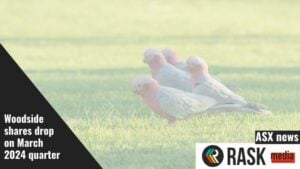The Vanguard High Yield Australian Shares ETF (ASX: VHY) is the best dividend income-focused ETF on the ASX, in my opinion, but it should only be used by a small number of investors.
In this article, I’ll attempt to explain why the VHY ETF is great, but it probably isn’t a complete replacement for the Australian shares investments in your Core portfolio.
I’ll compare VHY to popular ETFs like the BetaShares Australia 200 ETF (ASX: A200) and Vanguard Australian Shares ETF (ASX: VAS) for context.
VHY: What you get
Imagine you want to invest in the 300 biggest Australian companies (the VAS ETF) or just the 200 (A200 & IOZ do this), but you want to only invest in the large companies that are expected to pay dividends — with or without franking credits.
That’s what the VHY ETF was designed to do — and currently does.
In times gone by, some of these ‘dividend ETFs’ would use last year’s dividend payments to determine which companies to buy today. For example, Commonwealth Bank of Australia (ASX: CBA) shares paid a dividend last year. So did BHP Group Ltd (ASX: BHP). But what happens if profits fall and the boards of the companies cancel their dividends this year? Current investors in VHY or similar dividend ETFs would lose.
This is why VHY uses forecast dividends to pick the shares to include in the portfolio. The forecasts are based on a big database filled with analysts’ consensus forecasts. The number or amount of dividends ain’t always correct but they’re pretty reliable as a group.
VHY’s ETF investors end up with broadly the same big names (CBA, BHP, etc) as you will see featured in BetaShares A200, iShares IOZ or Vanguard VAS (you’ll also find them in VanEck’s Equal Weight ETF (ASX: MVW), but to a lesser extent.
The thing is, the way VHY is constructed means there is a significant amount of nuance. For example, compared to A200, IOZ or A200, VHY has:
- Far fewer companies (~75 companies) (which should mean “more risk”, but after 10 unique positions the benefits of diversification diminish rapidly, so it’s not massively different)
- A skew toward much larger companies ($50 billion average size versus $33 billion for VAS)
- Lower-valued companies (due to them being more mature with less growth)
- A skew to industries where size is the major competitive advantage (e.g. banks and resources)
By definition, then, comparing VHY to VAS, A200 or IOZ et. al. you get less diversification, fewer smaller and growing companies, better ‘value’ / higher yield and plenty of banks and resources.
So VHY is no good?
VHY is my pick of the dividend ETFs. And I’d be happy to own it. But the devil is in the detail. Unless you were prepared to take a bit of concentration in the Aussie shares part of your Core portfolio, I think it would have to be blended.
I’d blend VHY with:
- Small-cap Australian shares – that is, active funds (which are mostly not available on the ASX)
- Funds or ETFs with a mid-cap bias – this is why I think VAS blends better with VHY than A200 or IOZ (or STW), since VAS also includes the companies in the 200-300 range (though not much is in that tail).
- An equal-weight Australian shares ETFs – MVW, which includes ~100 shares, is probably the best example.
Blending is not necessarily a bad thing. After all, I think you must blend your Core portfolio if you invest in shares (having 100% shares is not suitable for most people, in my view). So VHY being different is not necessarily a bad thing. As Aldi might say, it’s ‘Good Different’. But just blend it appropriately.
Tax, tax and more taxes
Investors often look at VHY as a complete franking credits income portfolio, and it’s pretty good for that. But due to a few things, it’s not perfect.
For example, it’s an ETF/unit trust, so any taxes generated within the ETF are passed back to you (the ETF investor) whether or not you want them. That’s why LICs or holding companies – for example, Washington H. Soul Pattinson & Co. Ltd (ASX: SOL) — can do a better job for high-income earners (probably they are good investments!).
Second, but related, VHY ‘turns over’ its portfolio reasonably often. This is expressed as a percentage in some fund or ETF reports (note: very few funds want to disclose their turnover because it would reveal they’re not doing what they say they’re doing). VHY’s turnover is ~ 25%. Compare that to A200 (4.7%), VAS (0.8%) and MVW (36%) and you’ll begin to notice the theme. See it?
Typically, the more rules and the more concentrated an ETF’s portfolio is — the higher the turnover.
And higher turnover is typically a bad thing for anyone who pays tax — because it crystallises tax gains (see above).
Really high turnover can also mean that an Aussie shares ETF misses out on franking credits because it doesn’t meet the 45-day rule (investors are required to hold shares paying franking credits for 45 days ‘at risk’, or the franking credits are useless). Put another way, a 25% turnover rate for VHY ‘could be’ reversed to imply the average holding period is 4 years (1/0.25). Contrast this to an active fund, where a typical fund manager might have an average holding period of 6 months or less!
Another concern arising from a short holding period is investors may be ineligible for the long-term capital gains tax discount (CGT discount). For example, as an accumulator, if I buy National Australia Bank (ASX: NAB) shares at $10 today and sell them for $20 in one year (and a few days, for good measure) the amount I include in my tax return is $10 (the gain) divided in 2 — $5. If I held it for 350 days (i.e. not a full year), I’d cop $10. You can see why a long-term holding (low turnover) also applies to funds, ETFs and their portfolios!
Again, this type of granular tax information isn’t often shown or reported (and everyone’s tax positions vary). So it’s not good enough to look at the returns of one ETF and compare them to another. “How much is lost in tax?” you might ask. You’ll have to ask the current investors (or ask the fund to disclose it).
And, of course, as we always say to the Rask community — never trust the “yield” figures on an ETF or fund’s website.
VHY’s performance
Now that my long-winded disclaimer is out of the way. Performance.
Over the long run (10 years), VAS (7.79%) has been the better performer compared to VHY (6.74%), in total return terms to 30 April 2023 (net of fees). More recently, using 5 years of annualised returns, VHY (9%) wins versus all the major Aussie shares ETFs (VAS was second at 8.22%). Even over three years, VHY wins — and by some distance.
I think the reason(s) can be put down to VHY’s blue chip focus (in a period of high rates), fewer small caps (they are struggling lately!), and bias towards resilient sectors (resources and mining, banks).
Importantly – VHY’s strong relative performance might not always persist. So while it’s the best performer right now, there are no guarantees. If/when growth companies comes back in focus, I’d expect VHY to underperform, potentially meaningfully.
Remember, most of VHY’s return comes from dividends/distributions (which can include capital gains), not the ‘growth’ element. But over the ultra long term, the best returns come from owning the outlier top stocks.
VHY: the bottom line
VHY is a great ETF, especially for retirees focused on income. Or even as a small allocation for accumulators (investors before retirement). I think it’s true that ‘consistent dividends don’t lie ‘when we’re talking about individual companies (they tend to be stronger companies, generally speaking). However, there’s more to with ETFs, including tax, portfolio construction/blending, and risk.
Please don’t forget you can always just sell part of your other holdings to fund a retirement or passive income stream (e.g. 4% of a growth stock). If you hold it for 12 months, and excluding franking credits, it might even be a better option than targeting yields, once all is said and done.
We hold VAS in our Rask Core model portfolios (but we’d just as easily hold A200, IOZ or STW), and we have small optional allocations to VHY for retirees who want to tilt to franking credit income (and don’t have as much of a concern about tax consequences).




